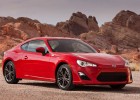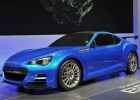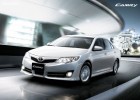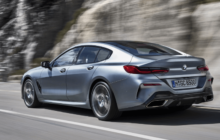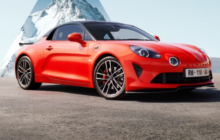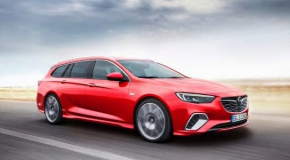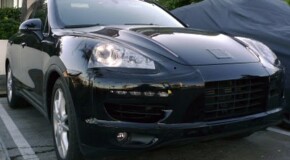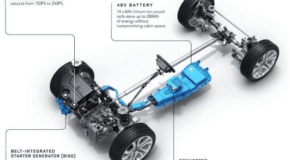Toyota Company History
Toyota Motor Corporation, Toyota Jidōsha Kabushiki-gaisha?, TYO: 7203), commonly known simply as Toyota, is a multinational corporation headquartered in Japan and used to be the world’s largest automaker by sales.
It is also the largest in US sales. At its peak, Toyota employed approximately 320,000 people worldwide.
The company was founded by Kiichiro Toyoda in 1937 as a spinoff from his father’s company Toyota Industries to create automobiles. Three years earlier, in 1934, while still a department of Toyota Industries, it created its first product, the Type A engine, and, in 1936, its first passenger car, the Toyota AA.
Toyota also owns and operates Lexus and Scion brands and has a majority shareholding stake in Daihatsu and Hino Motors, and minority shareholdings in Fuji Heavy Industries, Isuzu Motors, Yamaha Motors, and Mitsubishi Aircraft Corporation. The company includes 522 subsidiaries.
Toyota is headquartered in Toyota City, Aichi and in Tokyo.
In addition to manufacturing automobiles, Toyota provides financial services through its division Toyota Financial Services and also builds robots. Toyota Motor Corporation (including Toyota Financial Services) and Toyota Industries form the bulk of the Toyota Group, one of the largest conglomerates in the world.
The Toyota Motor Company received its first Japanese Quality Control Award at the start of the 1980s and began participating in a wide variety of motorsports. Due to the 1973 oil crisis, consumers in the lucrative U.S. market began turning to small cars with better fuel economy. American car manufacturers had considered small economy cars to be an “entry level” product, and their small vehicles employed a low level of quality in order to keep the price low.
By the early sixties, the US had begun placing stiff import tariffs on certain vehicles. The Chicken tax of 1964 placed a 25% tax on imported commercials vans.
In response to the tariff, Toyota, Nissan Motor Co. and Honda Motor Co. began building plants in the U.S. by the early eighties.
In 1982, the Toyota Motor Company and Toyota Motor Sales merged into one company, the Toyota Motor Corporation. Two years later, Toyota entered into a joint venture with GM called NUMMI, the New United Motor Manufacturing, Inc, operating an automobile-manufacturing plant in Fremont, California.
The factory was an old General Motors plant that had been closed for two years. Toyota then started to establish new brands at the end of the 1980s, with the launch of their luxury division Lexus in 1989.
In the 1990s, Toyota began to branch out from producing mostly compact cars by adding many larger and more luxurious vehicles to its lineup, including a full-sized pickup, the T100 (and later the Tundra); several lines of SUVs; a sport version of the Camry, known as the Camry Solara; and the Scion brand, a group of several affordable, yet sporty, automobiles targeted specifically to young adults.
Toyota also began production of the world’s best-selling hybrid car, the Prius, in 1997.
With a major presence in Europe, due to the success of Toyota Team Europe, the corporation decided to set up TMME, Toyota Motor Europe Marketing & Engineering, to help market vehicles in the continent. Two years later, Toyota set up a base in the United Kingdom, TMUK, as the company’s cars had become very popular among British drivers. Bases in Indiana, Virginia and Tianjin were also set up.
In 1999, the company decided to list itself on the New York and London Stock Exchange.
Toyota Deutschland’s headquarters in CologneIn 2001, Toyota’s Toyo Trust and Banking merged to form the UFJ, United Financials of Japan, which was accused of corruption by the Japan’s government for making bad loans to alleged Yakuza crime syndicates with executives accused of blocking Financial Service Agency inspections.
The UFJ was listed among Fortune Magazine’s largest money-losing corporations in the world, with Toyota’s chairman serving as a director.
At the time, the UFJ was one of the largest shareholders of Toyota. As a result of Japan’s banking crisis, the UFJ was merged again to become Mitsubishi UFJ Financial Group.
In 2002, Toyota managed to enter a Formula One works team and establish joint ventures with French motoring companies Citroën and Peugeot, a year after Toyota started producing cars in France.
Toyota ranked eighth on Forbes 2000 list of the world’s leading companies for the year 2005. The company was number one in global automobile sales for the first quarter of 2008.[25]
On December 7, 2004, a U.S. press release was issued stating that Toyota would be offering Sirius Satellite Radios. However, as late as January 27, 2007, Sirius Satellite Radio and XM Satellite radio kits were not available for Toyota factory radios.
While the press release enumerated nine models, only limited availability existed at the dealer level in the U.S. As of 2008, all Toyota and Scion models have either standard or available XM radio kits. Major Lexus dealerships have been offering satellite radio kits for Lexus vehicles since 2005, in addition to factory-equipped satellite radio models.
In 2007, Toyota released an update of its full size truck, the Tundra, produced in two American factories, one in Texas and one in Indiana. “Motor Trend” named the Tundra “Truck of the Year,” and the 2007 Toyota Camry “Car of the Year” for 2007. It also began the construction of two new factories, one to build the RAV4 in Woodstock, Ontario, Canada and the other to build the Toyota Prius in Blue Springs, Mississippi, USA.
This plant was originally intended to build the Toyota Highlander, but Toyota decided to use the plant in Princeton, Indiana, USA instead. The company has also found recent success with its smaller models – the Corolla and Yaris – as gas prices have risen rapidly in the last few years.
In 2009-2010, the company was heavily in debt, and had to request a loan of more than $3 billion from a bank backed by the Japanese government.
via Wikipedia


